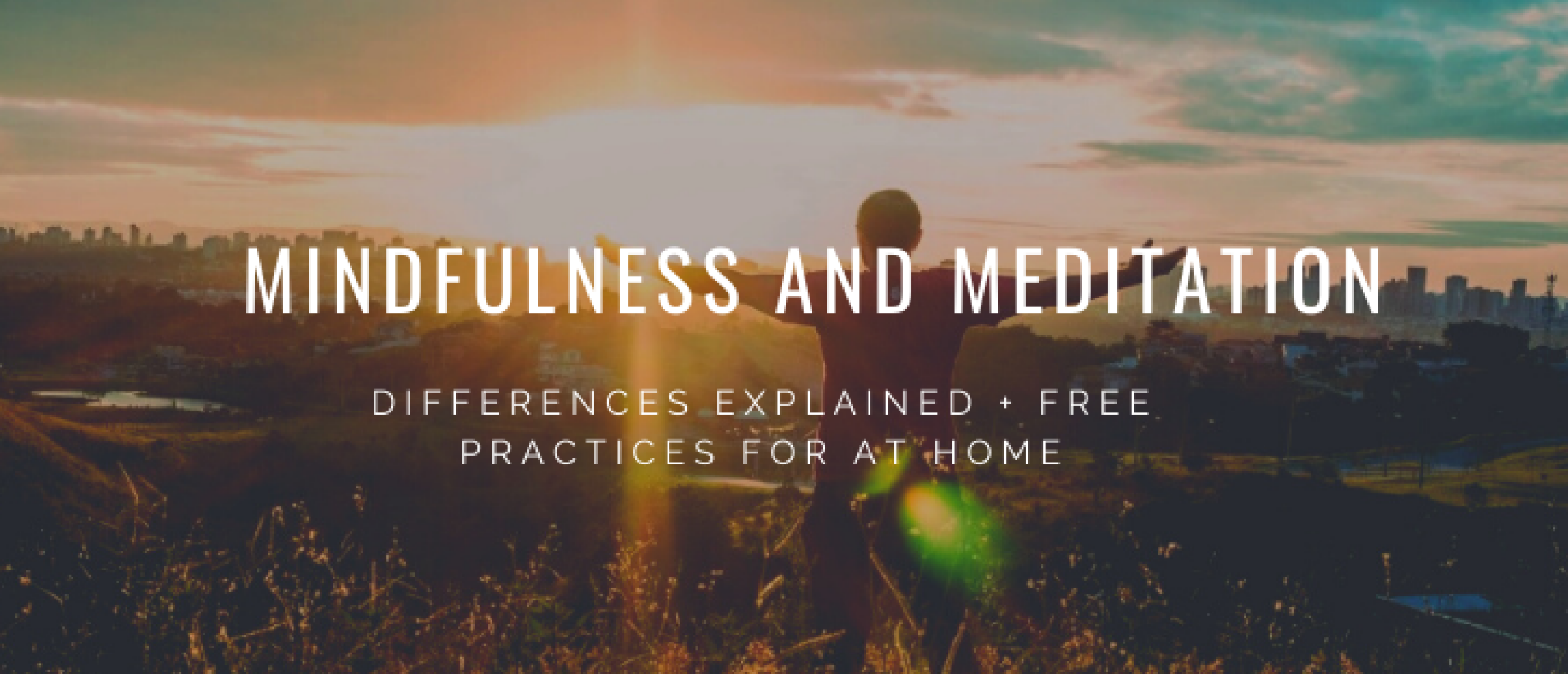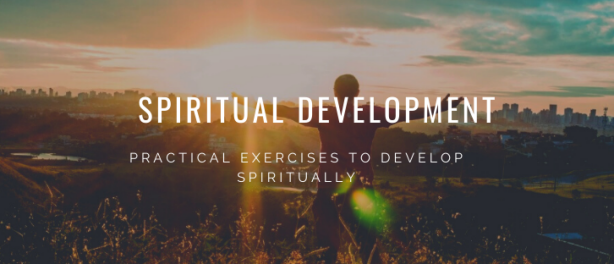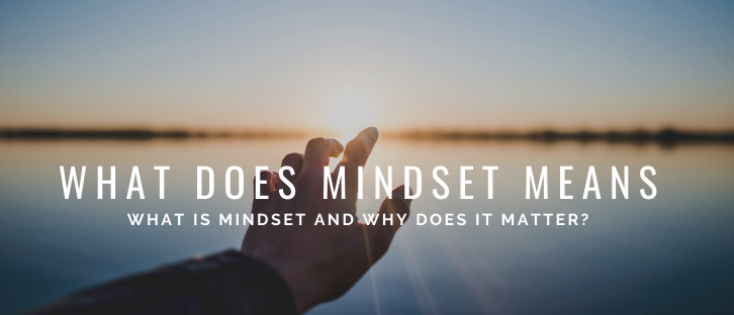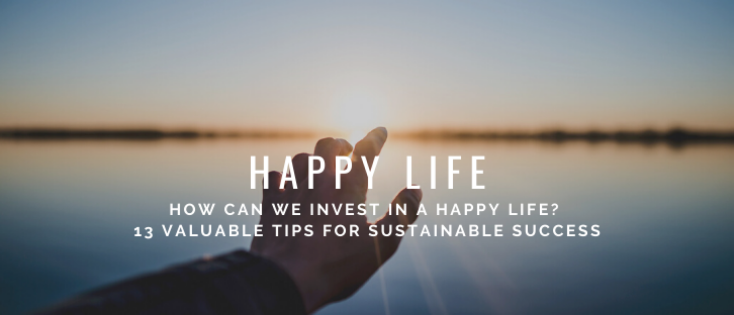Dear Happy Investor, mindfulness and meditation go hand in hand. Practicing both mindfulness and meditation leads to a happier life. You become more fulfilled as a result. This is important because, as a Happy Investor, we don't just strive for financial independence. Above all, we strive to be happy. Financial freedom helps with this, but it is not the solution. The true solution lies in mindfulness: doing what you really want and being content with that.
Below we explain the differences between mindfulness and meditation. You will also find free exercises for at home.
Content
Mindfulness and Meditation differences explained

Meditation and mindfulness are ancient practices whose purpose is to achieve higher states of consciousness and get in touch with the Divine. These days, they are popular techniques to reduce stress and induce a state of relaxation in the body. They are also great to improve focus and awareness.
There is a strong relationship between mindfulness and meditation, but they are not necessarily the same. The biggest difference between mindfulness and meditation, is that mindfulness is a broader concept. Also, it is also more practical and less "floaty" (although with meditation it doesn't have to be.
Let's look at the similarities and differences between mindfulness and meditation.
Different ways of practicing and applying
Both practices allow you to train your mind to bring you higher states of awareness. They both can have a great impact on your physical and mental health, as well as your overall wellbeing. Both mindfulness and meditation are ancient practices that allow you to find the balance between your body, mind, and soul.
Nevertheless, they are not exactly the same. Here are some key differences between mindfulness and meditation.
First, meditation is a timed practice. You can choose to meditate for a few minutes, one hour, or more. It often involves sitting still with your eyes closed.
On the other hand, mindfulness means being aware of the present. You can be mindful at any time, in any place, alone, or surrounded by other people. It is about choosing to be fully engaged in the present.
Another key difference is that, in mindfulness, you need to be fully aware of your physical body and everything that surrounds you. While in meditation, you slowly reduce your awareness of your surroundings and physical body to focus more on your inner world.
In a state of deep meditation, people report not feeling their bodies. Some experience a state of non-being where they don't feel time, space, and even that the ego dissolves temporarily.
Mindfulness means focusing on everything at the same time. Meditation means quieting your mind and senses to focus on a single thing (your breath, your heartbeat, a mantra, etc.).
Both practices complement each other. Mindfulness is a required state to begin any meditation practice. Meanwhile, daily meditation makes it easier to maintain a mindful state of mind throughout the day.
The attention span of humans seems to decrease gradually to that of a goldfish. Thanks to mindfulness and meditation you get more concentration. This makes you sharp. During team meetings, important decisions, or simply intense togetherness with your partner.
Mindfulness breathing practices (for at home)
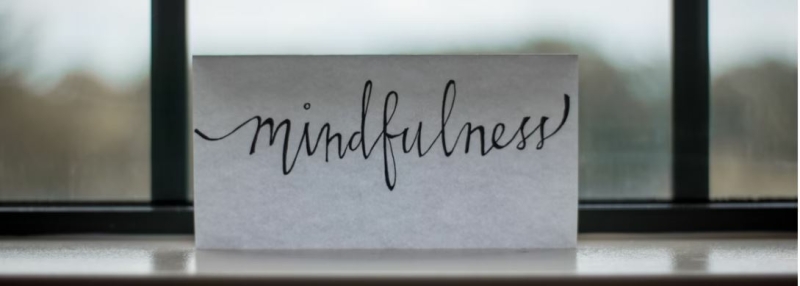
Everyone can benefit from practicing mindful breathing. The combination of mindfulness and breathing techniques means increasing awareness of the present moment and living each moment as fully as possible.
Our breath is "prana", the life force. Breathing provides us life by bringing oxygen to our cells and releasing waste products in the form of carbon dioxide when we exhale. Different types of breathing have different effects on our bodies. For example, rhythmic breathing helps to keep the nervous system in balance.
Another angle that validates this is the Wim Hof method. You know, that crazy Dutchman who climbs mountains in his underpants. He is a master of breathing and deep concentration. In his book, he explains the method, including some scientific underpinnings that correspond to the philosophy regarding "prana".
Mindfulness breathing practices are one of the simplest ways to train your ability to stay in the present moment. They use breathing to cultivate a mindful state of mind.
How to apply and practice mindful breathing
The fundamental way of practicing mindful breathing is to pay attention to your breath, with deep inhales and slow exhales. You can perform this exercise while standing, but it's best if you sit or lie down in a comfortable position.
You can keep your eyes open or closed, or maintain a gentle stare, with your eyes slightly closed but not focused on anything specific.
Scheduling a specific time for this exercise might be beneficial, but it can also be beneficial to perform it when you're feeling particularly stressed or nervous. Practicing mindful breathing regularly will make it easier to do so under stressful situations.
Mindful breathing to reduce stress
If you are stressed, you can try box breathing. Inhale for a count of 4, hold the breath for a count of 4, exhale for a count of 4, wait for a count of 4 at the very end of the exhale, and repeat.
This is a deep breathing practice that helps the nervous system relax and regulate. Slowing down your breathing allows CO2 to build up in your blood, which stimulates the vagus nerve, resulting in feelings of serenity all over your body.
Other mindfulness breathing practices
Other famous mindfulness breathing exercises include pranayamas, or breath regulation exercises. For example, the alternate nostril breathing.
This yogic method, also known as Nadi Shodhana, is best performed when sitting upright with a long spine – seal one nostril with the thumb, then inhale thoroughly. Release the thumb and quickly use the ring finger to close off the other nostril and exhale slowly until the lungs have fully expanded. Repeat with each inhalation and exhale, swapping nostrils.
According to yogic texts, this procedure balances the right and left hemispheres of the brain, resulting in a stable and pure state of mind. When you're anxious, stressed, or agitated, using breathing methods might help you relax.
When you get up in the morning, you can practice mindful breathing to relieve muscle stiffness and back tension. You can also use these techniques to clear congested breathing passages.
Mindfulness meditation (free) practices at home
Mindfulness meditation is a type of meditation whose main purpose is to promote a mindful state of mind by focusing on the present moment. You become intensely aware of what is surrounding you, without letting any judgment pass through your mind.
Many techniques can help you achieve this state of mind.
Like any other meditation technique, you first need to relax and release tension in the body. Then, focus on your physical body. Pay attention to your breath, your heartbeat, every bodily sensation.
Also, pay attention to your environment: what sounds can you hear? Is there a lot of light in the room? Do you identify any smells? Focus on the whole without giving too much importance to specific details. If you want, you can close your eyes to amplify non-visual sensations.
Start to observe your thoughts and feelings. Pay attention to any thought that comes to your mind. Don’t let it overwhelm you, just observe it. Then, let it go. Do the same for any other thought.
Practice meditation as a gym for your mind
If your mind wanders, slowly and calmly bring your focus back to the present moment. Don't force it, just let it flow again to the present moment.
There will be a lot of moments where your mind starts to wander, and you forget about the present. It's completely normal. Meditation is like a gym for the mind, the more you train it, the more you will be able to control it.
You can use your breath to bring your attention back to the present moment. Inhale deeply, hold your breath, and release it slowly. There is a strong link between your breath and your thoughts. When your breath is slow-paced, so are your thoughts. The longer you hold your breath, the longer your mind can keep the inner silence.
Lift your gaze gently when you're ready, and if your eyes are closed, open them. Take a moment to listen to the sounds surrounding you. Try to be aware of how your body is currently feeling. Observe your feelings and thoughts.
Don’t immediately rush into the next task. Instead, take a minute to appreciate the present and process the whole meditation exercise.
There is not a set time to do this practice. You can start with five minutes, but try to do it as much as possible. Gradually increase the time you spend meditating. You can even meditate for more than an hour.
You can use a timer so you can relax about the time and you are not stressed about future tasks.
Want to know more about mindfulness and meditation exercises? Read all about personal development here.

